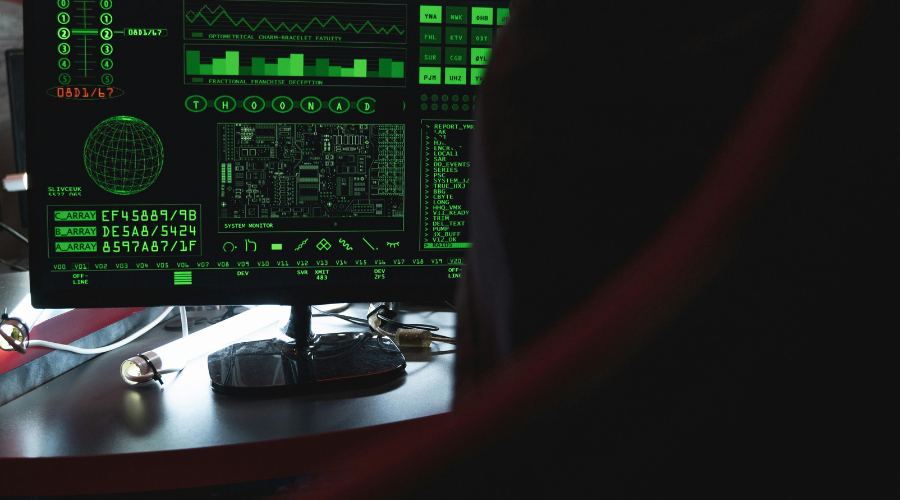Imagine waking up one morning to find your organization's entire network locked, files encrypted, backups gone, and a chilling ransom note flashing on every screen.But what if the attackers did not just hit-and-run? What if they had been in your systems for weeks, silently observing, mapping your infrastructure and stealing data before announcing to you that they would release the data publicly unless you paid them? This is the new reality of ransomware; in 2026, it will be another changing year in this digital arms race.
Drawing on insights from leading cybersecurity experts and industry forecasts, this article explores the key ransomware trends that organizations need to pay closest attention to in 2026, along with how to remain resilient in an increasingly complex threat landscape.
The ransomware economy evolves beyond file encryption
Ransomware is no longer limited to encrypting files. Perpetrators now view it as an ongoing business model. Instead of encrypting files like in the old days, modern ransomware enterprises include reconnaissance, extortion, and manipulation of data. You can expect to see this trend toward more multi-phase campaigns focused much more on leverage in 2026 and less disruption.
The rise in popularity of Ransomware as a Service (RaaS) has helped make it easy for less skilled cybercriminals to jump into the fray and participate. RaaS operators have developed kits for the malware itself, as well as payment portals with RaaS operators taking a cut of the proceeds from affiliates. This professionalization of cybercrime will keep that economy going.
In addition to double extortion, triple extortion is becoming the norm. Not only do they encrypt and steal data, but they also threaten to post or sell the data if the ransom is not paid. Some have started to even attack their victim's clients/supply chain to increase pressure. Some groups have also opted not to encrypt and only use the threat of going online to get paid.
Ransomware groups have learned that embarrassment and fear can be more potent than encryption alone, and they are adapting quickly.
Stealth, persistence and overlooked infrastructure
Attackers are anticipating attacks by evolving their techniques as defenders get better at detection and response. The ransomware groups of 2026 will not focus on brute-force entry; they will increasingly focus on stealth and persistence. They are ready to repurpose forgotten infrastructure, such as legacy servers, forgotten applications or poor security for remote administration tools like Windows administrator tools.
These intrusions are also getting longer and quieter. Rather than launching an attack without a moment's delay from initial access, threat actors are now simply sitting in networks watching, studying the environment, observing users, and pinpointing critical data for weeks before they launch their attack. Moreover, this affords the actors time to disable backups altogether! All of this culminates in the final act, which is coordinated, precise and ultimately devastating.
Vulnerabilities continue to increase at breakneck speed, and agencies and firms are working diligently to keep up on patching! Interestingly enough, threat actors don't even need to focus on newly uncovered exploits, since 9 times out of 10 they rely on weaknesses that organizations have left unaddressed for years.
In 2026, the speed of recovery after a ransomware incident will matter just as much as the speed of ransomware prevention. Organizations will have tested their restoration processes after the event, instead of simply blocking a ransomware event.
AI weaponization and automation in ransomware campaigns
Artificial intelligence is changing both sides of the equation in cybersecurity. For defenders, artificial intelligence will help identify anomalous behavior and automate responses. For attackers, it means there will be even more sophisticated and targeted ransomware campaigns available that can be automated.
By 2026, cybercriminals will be automating reconnaissance, targeting individuals with personal phishing attacks, and creating code that mutates in real time to evade detection. Deepfakes and voice cloning will add difficulty to the elevated executive impersonation, putting executives at risk and allowing criminals to tactfully persuade employees to allow access.
AI-enabled ransomware will increase the speed of attack, efficiency, and detectability for organizations. However, defenders will also need to adopt AI tools for their use in not just detecting anomalies, but also creating automated responses and containment.
The challenge for defenders will be acquiring the sophistication of their adversaries, who will be innovating at the same speed.
Regulatory pressure, cyber resilience and human risk management
Ransomware’s impact can be seen all around the world, with governments and regulators responding. By 2026, cybersecurity requirements around legal and regulatory reporting will cause organizations and companies alike to consider cyber risk management as a boardroom priority rather than merely an issue for technical departments.
Regulators in several countries are already proposing to limit the ability of the public sector and owners of critical infrastructure to pay ransom. This shift will compel companies to invest greater effort in prevention and recovery, rather than relying on ransom payment as a fallback.
However, human behavior and action remain the single greatest vulnerability. Phishing, credential reuse, and misconfigurations remain the path of least resistance for individuals attempting to penetrate target networks. Organizations with foresight are moving away from annual awareness training to providing real-time behavioral coaching and ongoing education. Cyber resilience will depend not on technical protocols, but on the awareness and discipline of each person within an organization.
Ultimately, cybersecurity is transitioning from a technical challenge to a cultural one. Organizations and companies that prioritize and include security in every single layer of their organization's people will be in a much better position to absorb and survive the eventual wave of ransomware attacks.
Sector-specific targeting and supply chain exposure
Cybercriminal organizations are taking a more strategic approach to choosing their victims, and they don't seem to be doing so by casting the widest net possible. Instead, they're zeroing in on sectors where downtime is most damaging, including industries such as healthcare, manufacturing, logistics, finance, and energy.
These industries are particularly vulnerable to cyberattacks because a disruption can have significant ripple effects. A few hours of downtime may halt production, disrupt critical services, and/or endanger lives. This makes them attractive prey for hackers looking to extort organizations.
Additionally, supply chain attacks will also continue to rise. Instead of attacking famous organizations directly, bad actors will attack smaller vendors or service providers that have weaker security and will use this as an opportunity to exploit larger organizations. It is important to remember that every single connection is an opportunity for hackers to exploit an organization.
As digital ecosystems become more connected, organizations must stretch their security standards to include suppliers, vendors, third parties, and contractors. In 2026, an organization's resilience to ransomware will need to include knowledge of everyone's security posture to whom they are digitally connected.
What organizations should start doing now
With the fast-changing ransomware environment, preparation cannot wait. Here are some actions that organizations should begin implementing today to bolster their defense for 2026 and beyond.
- Map your attack surfaces thoroughly, including endpoints, remote access points, legacy systems, vendor connections, and cloud workloads.
- Prioritize vulnerability management intelligently, focusing on the vulnerabilities most likely to be exploited, not just those that are newest.
- Adopt zero trust architecture and segmentation, ensuring every access request is verified and lateral movement is minimized.
- Build and practice ransomware response playbooks that simulate long term intrusions and multi extortion scenarios.
- Invest in human risk management with continuous security awareness, phishing simulations, and behavioral analytics.
- Strengthen governance and resilience by making cyber risk a board level topic and regularly testing your business continuity and recovery plans.
- Assess supply chain and third party risk, ensuring partners meet minimum security standards and monitoring vendor access continuously.
- Prepare for AI driven threats by deploying advanced detection and automated response tools to stay ahead of evolving attacks.
Wrapping up
Ransomware is not going away, it’s changing into a smarter, targeted, and focused threat toward businesses. The next year is when every organization is going to be tested for organizational resilience, technically and in leadership and culture.
In the future, the victims of ransomware will not only lose their files, but they will also lose trust, customers, and reputation. The ones that act now will create a competitive advantage by building resilience.
This is the time to start to take ransomware seriously at every level of your organization. You can review your defenses, train your teams, test your backups, and strengthen your partnerships. Cybersecurity in 2026 is not just about keeping the bad guys out, it’s about building a culture and infrastructure strong enough to withstand whatever comes next.






